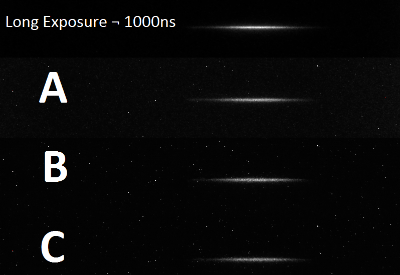Laser/Microwave-Based Diagnostics of Combustion
Lasers have a long history of application for non-intrusive diagnostics of combustion. Laser-based combustion diagnostics, as well as other optical diagnostic methods, extensively exploit the direct interaction of light and matter, providing an important tool to observe the spectroscopic states of molecules and atoms with high spectral and spatial resolution. A main feature of optical techniques is the non-intrusive in-situ investigation of the sample without significant interference between the sample and the measuring device itself. Laser-based techniques utilized for combustion diagnostics include optical absorption, cavity ring-down spectroscopy, laser-induced fluorescence, Rayleigh and Raman scattering, etc.
We are specifically focused on studying the physics of laser-induced plasmas in a broad wavelength range from UV to mid-IR and how these plasmas can be applied for combustion diagnostics. Specifically, we are employing unique microwave scattering diagnostics for studying photoionization rates in various gases, since these are highly sought in the areas of nonlinear optics and filamentation physics. Another thrust is the development of hybrid diagnostic techniques involving Resonance Enhanced Multi-Photon Ionization (REMPI) for selective ionization of gaseous species and microwave scattering for detecting absolute electron numbers in these plasmas. This approach can be used for measurements of number densities of gaseous species in combustion mixtures.


Laser-induced plasma and 2D distribution of electron number density in femtosecond-laser spark
References:
- A. Sharma, M.N. Slipchenko, M.N. Shneider, X. Wang, K.A. Rahman, and A. Shashurin “Counting the electrons in a multiphoton ionization by elastic scattering of microwaves” Sci. Reports 8, 2874 (2018).
- A. Sharma, M.N. Slipchenko, M.N. Shneider, K.A. Rahman, and A. Shashurin “Direct measurement of electron numbers created at near-infrared laser-induced ionization of various gases” J. Appl. Phys. 125, 193301 (2019).
